
The optics hyper-radial and meso-radial.
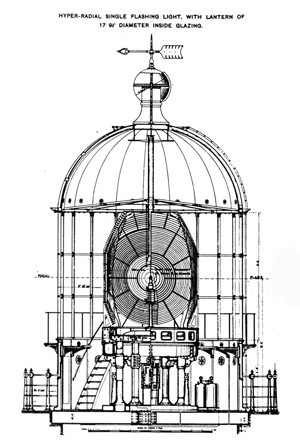
The most common lenses, developed by Fresnel, are classified following the focal length into 6 categories, from 1° order ( 920 mm - 36,2 inches) to 6° order ( 150 mm - 5,9 inches). Three other rarer categories exist, 3,5° (375 mm - 14,7 inches), 7° (140 mm - 5.7 inches) and 8° order (75 mm - 3.1 inches).
Two categories are not mentioned, hyper-radial lenses and meso-radial lenses.
The hyper-radial lenses have a focal length of 1.330 mm (52.3 inches) and the meso-radial lenses a focal length of 1.125 mm (44.3 inches).
These lenses have been little used but some are still used. There are 29 hyper-radial lenses and 2 meso-radials.
History.
The history of lenses began with Augustin Fresnel. In 1823, he installed the first device equipped with his lenses at the Cordouan lighthouse. This device consisted of 4 concentric wicks burning with colza oil.
At the end of the 1860s, the evolution was at the level of the lamps. The lamps are larger and the fuel changes to kerosene and coal gas.
The English and Scottish adopted these lenses. Thomas Stevenson, in charge of the lighthouses for the Northern Lighthouse Board based in Edinburgh, finds that with wider burners some of the light is lost because it is no longer in the focal length. In addition, some lenses crack due to heat.
His solution was to make larger lenses. In 1869, this idea was not accepted.
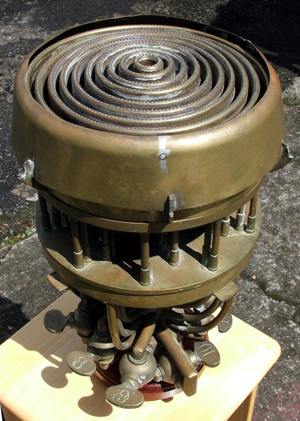
For his part, in Ireland, John Wigham developed new gas burners. He went from 28 to 108 jets. This system could be modulated according to visibility.
In 1877 he reached the same conclusions as Stevenson. Larger lenses were needed.
He goes to the company F. Barbier in Paris. He asks to design these lenses and to make a drawing and a quote. But he doesn’t have the power to produce these lenses.
At the same time, these burners were of concern to the lens manufacturers (Chance Brothers, Sautter and Henry-Lepaute). The heat emitted and the light lost are too important.
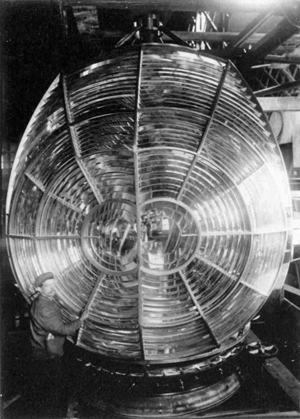
Flannan Islands - Ecosse.
In order to solve these problems, major tests are decided. These tests concern the types of burners and fuels. The South Foreland Lighthouse is designated.
The Stevenson brothers come to the same conclusion, we need a bigger lens. With Wigham’s large burner, lenses have cracked.
David and Charles contacted the firm F. Barbier and asked to produce a larger group of lentils. F. Barbier proposes the project developed for John Wigham, a focal length of 1330 mm.
The tests with these new panels and the burner gave significant results. The Chance Brother lens manufacturers were very impressed. Hyper-radial lenses were born.
Achievements.
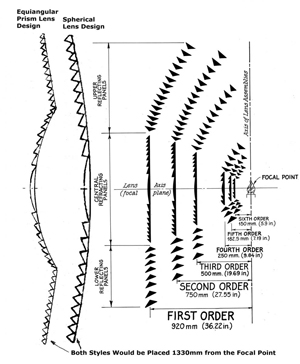
The hyper-radial lenses have been designed in 3 versions.
The first version is identical to a Fresnel lens of the 1° order, just of a larger dimension. The disadvantage is that the lantern must be very large, both in diameter and height.
The lens of Round Island is double, 4.6 m high and weighs more than 8 tons.
The second version was developed by Charles Stevenson in 1891. Its spherical design includes the beef eye lens located 1330 mm from the focal spot. Each successive ring is placed further from the focus. This device works, but when the light exceeds a 40° angle, it is lost. It is placed at the Fair Isle North lighthouse.
The third version, called equiangled prism lenses, also consists of a bull’s eye placed 1330 mm from the focus. Up to an angle of 20°, the rings are placed closest to the focus. Then the prisms are placed as in the second version. This optic was placed Skerry Lighthouse Sule in Scotland in 1895. This system gives better results but the design is more expensive.
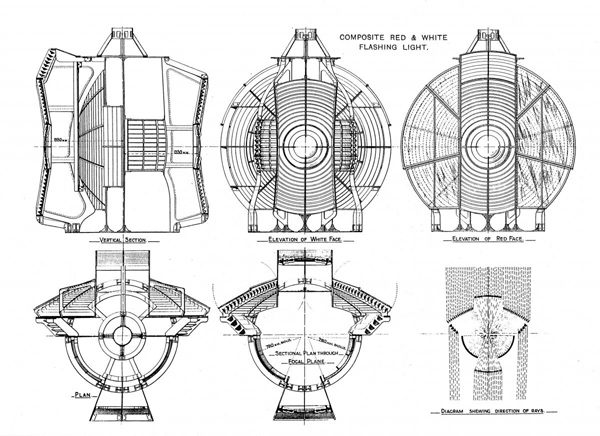
Bell Rock - Schotland.
These lenses were manufactured by 3 companies.
The first one is French. It was originally F. Barbier. It was founded in 1862 by Frédéric Barbier and Stanislas Fenestre under the name «Barbier et Fenestre». It changed its names several times, in 1887 «Barbier et Cie», «Barbier et Bénard» from 1889 and finally at the beginning of the 20th century it took its definitive name «Barbier, Bénard et Turenne». The company is better known as BBT.
BBT specializes in the manufacture of lighthouses, optical appliances and lighting systems. It was dissolved in 1982.
Chance Brothers (Birmingham) was the most important English glassware. In 1848, under the direction of Georges Bontemps, a French glassmaker from Choisy-le-Roi, they made high precision lenses for optics. Hyper-radial lenses are part of this production.
They are also known by the rotation mechanics of the optics.
The third is Henry-Lepautre. He partnered with Augustin Fresnel and specialized in the construction of clocks and rotating optical mechanisms. We only know 2 hyper-radial lenses made by Henry-Lepaute.
There would have been a total of 31 lighthouses equipped with hyper-radial lenses and 2 lighthouses equipped with meso-radial lenses.
The table below gives, by country, the names of the lighthouses equipped (or having been equipped) with these lenses. In addition, there is the year of manufacture, the name of the manufacturer. If the lenses are no longer used, the location of the lenses is known.
Some lenses may have been split into several parts, which does not facilitate localization.
(1) Museum of Scottish Lights near Kinnaird Head Lighthouse. (2) National Museum of Scotland at Edinburgh. (3) Sumburgh Lighthouse. This lens should be at the Museum of Scottish Lights now (2019). (4) National Maritime Museum Cornwall in Falmouth. Half of this unused lens is exposed. (5) Titanic Museum à Belfast. (6) Gairloch Heritage Gairloch Museum.
|
||||||||||||||||||||||||||||||||||||||||||||||||||||||||||||||||||||||||||||||||||||||||||||||||||||||||||||||||||||||||||||||||||||||||||||||||||||||||||||||||||||||||||||||||||
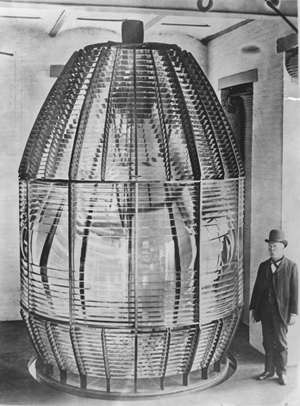
Makapu'u Point - Hawaii.

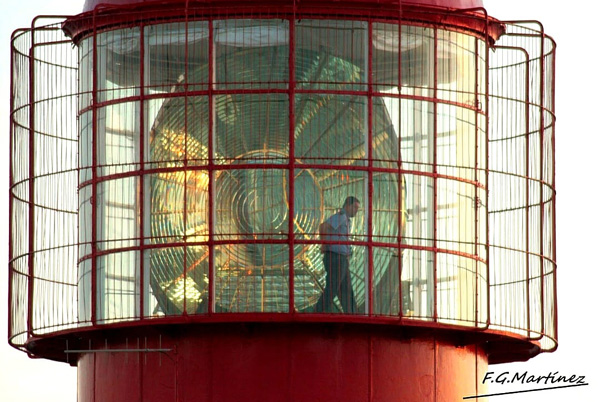
Cabo Sao Vincente - Portugal.
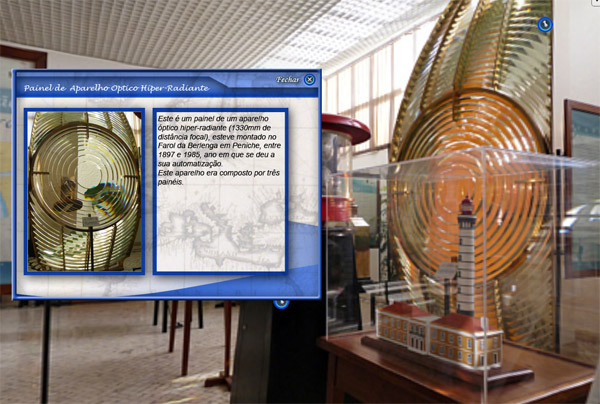
Farol da Berlengas - 1/3 at the Faro Museum in Santa Marta (here 1/3 at the Oeiras Museum).

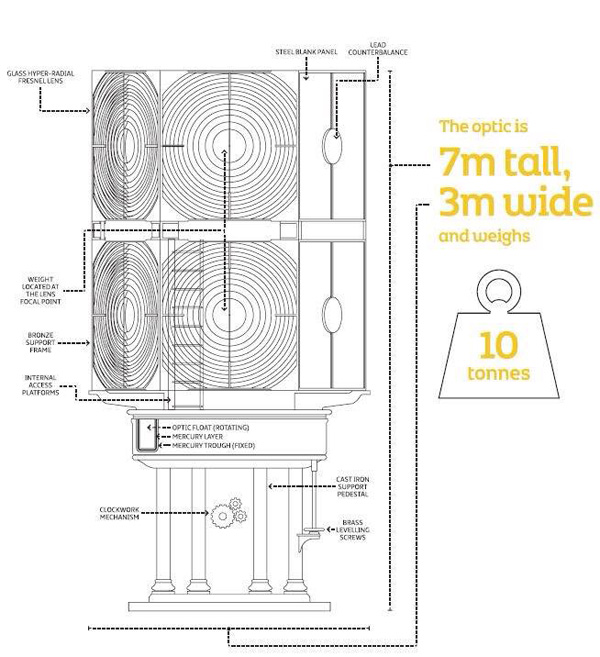
Mew Island - Ireland.
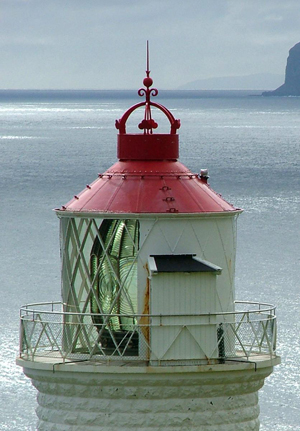
Nölsoy - Feroe Island.
Thanks.
I thank the people who have allowed me the realization and illustration of this page.